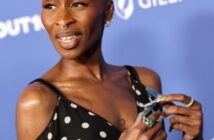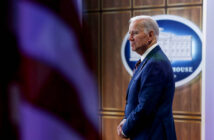As Director of Health Communications at Planned Parenthood, Dr. Megan Freeland prioritizes inclusion, equity and education. (Photo courtesy of Dr. Megan Freeland)
By Aria Brent
AFRO Staff Writer
abrent@afro.com
Planned Parenthood Federation of America (Planned Parenthood) is focused on providing quality sexual and reproductive healthcare. From breast exams to cancer screenings, the organization does it all.
For decades, Planned Parenthood has been a light at the end of the tunnel, providing medical services and support to far too many women with little or no access to health care.
While the organization has acknowledged its unsavory roots in the eugenics movement, today, people like Dr. Megan Freeland work diligently to provide care and education to millions of women on an annual basis- regardless of race.
Freeland currently serves as the director of health communications for the non-profit organization and she’s making sure that marginalized communities are receiving the education and resources they deserve. The pharmacist turned communications specialist spoke with the AFRO about her goals in the role, challenges she’s faced and the Planned Parenthood initiatives aimed at increasing access to their services.
AFRO: How did you get involved with Planned Parenthood and how long have you been in this role?
Dr. Megan Freeland: I have been with Planned Parenthood for over three years and I have been in my current role for about two years. When I came to Planned Parenthood in 2021, I came in as the associate director of Black health media. I found myself in that position because I had been working independently as a freelancer focusing on health content writing and health content strategy. I was doing a lot of work with digital health and health tech companies. I was helping them develop content strategies that were going to be most impactful for Black communities and other communities of color.
As a pharmacist by training and someone who has experience in medical and health communications, I know that a lot of published health information is done for default communities– which typically means White communities. When it comes to health care it’s important that information be tailored to specific audiences so that it’s relevant to their lives. When I saw that Planned Parenthood was looking for someone to help with the development of health information for Black communities and to engage with Black outlets to make sure that information was getting out to those folks I was really excited about the opportunity. When I was promoted to my current position, I went from only focusing on Black health media to leading the team that focuses on Black health media, as well as other other things under that umbrella.
AFRO: What are some of the responsibilities that you have in this role ?
MF: One part of my job is making sure that patients and families and everyday people know about the incredible work that Planned Parenthood is doing across the country to provide sexual reproductive health care and education. The internal partners that we work with are spending their time innovating in digital health and health technology.They’re innovating in education and in health care. Oftentimes, because they are being forced to innovate by the landscape of sexual and reproductive health care in the U.S. right now, they are innovating in arts and entertainment.
It’s really exciting work. We collaborate with a lot of external partners to execute. We might engage with the media. We might work with conferences or people who are hosting in person events to make sure that Planned Parenthood experts are represented there, communicating about the work they’re doing. We might show up at cultural events like ESSENCE Fest to make sure that we’re meeting people where they are.
Those are my responsibilities from a Planned Parenthood perspective. However, on a personal level, what is most important to me is beyond “Here’s the great work that Planned Parenthood is doing.” The question is “How can I help my team find creative ways to inform people about critical health care topics?”
Whether it’s abortion care, or cervical health, contraception, sex, education– any of those topics – what motivates me to do this work is my professional mission of fighting health misinformation.
AFRO: What are some of your goals for this position?
MF: What first comes to mind when I hear you ask that is stigma. Stigma related to sexual and reproductive health care is so pervasive across society. It’s not just something I come across in my work, it’s something that I see and hear every day whether I’m talking to loved ones in person or I’m scrolling through social media. Sometimes people think that stigma is just social in nature, like it doesn’t actually harm people. They think that it just sounds bad or makes people feel bad, but stigma has very concrete consequences. It keeps people from talking about issues that are really important to discuss with trusted individuals. It keeps people from getting care.
It can be so easy to go to your local Planned Parenthood and get tested for sexually transmitted infections but there’s a stigma that often keeps people from doing that. For me, one of my goals in this work is to do everything we can to eliminate stigma in sexual and reproductive health care. Another goal of mine is making sure that sexual and reproductive health care isn’t being lost in the health equity movement. It has to be central to all of the work that we do because if we look at health outcomes across different racial and ethnic demographics, we consistently see minority communities getting the short end of the stick. We’re having health disparities that aren’t affecting White communities. The maternal health crisis is a perfect example of that.
AFRO: What has been your greatest challenge in this role thus far ?
MF: A part of “meeting people where they are” is community and collaboration. We enjoy working with other entities, whether they are corporate brands or reporters, journalists, artists or celebrities. Those collaborations are really important to getting info in front of different audiences and making sure the messages are getting there as well.
We’ve been very fortunate to have amazing collaborators that we’ve been able to work with. However, every now and then we’ll run into issues where an organization or entity is not able to collaborate because of preconceived notions or stigma about the types of care that Planned Parenthood provides. That’s always discouraging because you realize that the effects of stigma are still there. The other challenge that I run into is prioritization because there is so much work to be done. There’s never a shortage of work to be done. There’s never a shortage of communities that we want to do more outreach and engagement with. There’s never a shortage of misinformation that we need to correct in some way. Recognizing that we are people too and we have lives outside of work and we have families and priorities and loved ones.
AFRO: What is the communications team at Planned Parenthood being intentional about?
MF: You mentioned this word earlier: inclusiveness. I think that is something that our organization is being really intentional about. How do we make sure that we’re not overlooking communities or experiences that are commonly overlooked in the work that we do? Whether it’s communicating about sex education and not just in the context of standard heterosexual relationships, but also making sure LGBTQ plus communities are also reflected in our communications about sex education. That’s just one example, but it represents our approach to making sure that we’re not leaving people behind– especially people who live in the communities that are already facing the most barriers to care because of racism in the health care system.
We’re being intentional about what kinds of spaces our experts are showing up in. We know that in the world we live in today, there are endless ways of engaging with organizations.
People still go places in person, so there’s the in person experience, there’s the social experience and there’s the event experience. Within all of those buckets there are multiple categories and ways that people engage. Twenty years ago, people were able to get news and information differently than how they do today. We’re really committed to continuously learning about how people are getting information, how people want to get information and where they’re going. We then, in turn, take that information and adjust our strategy to make sure that we are getting into these new places.



